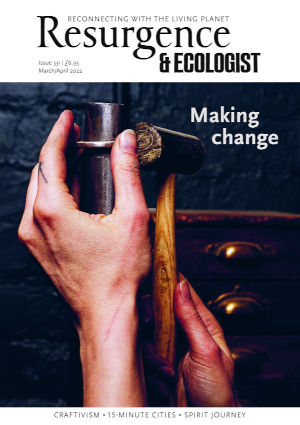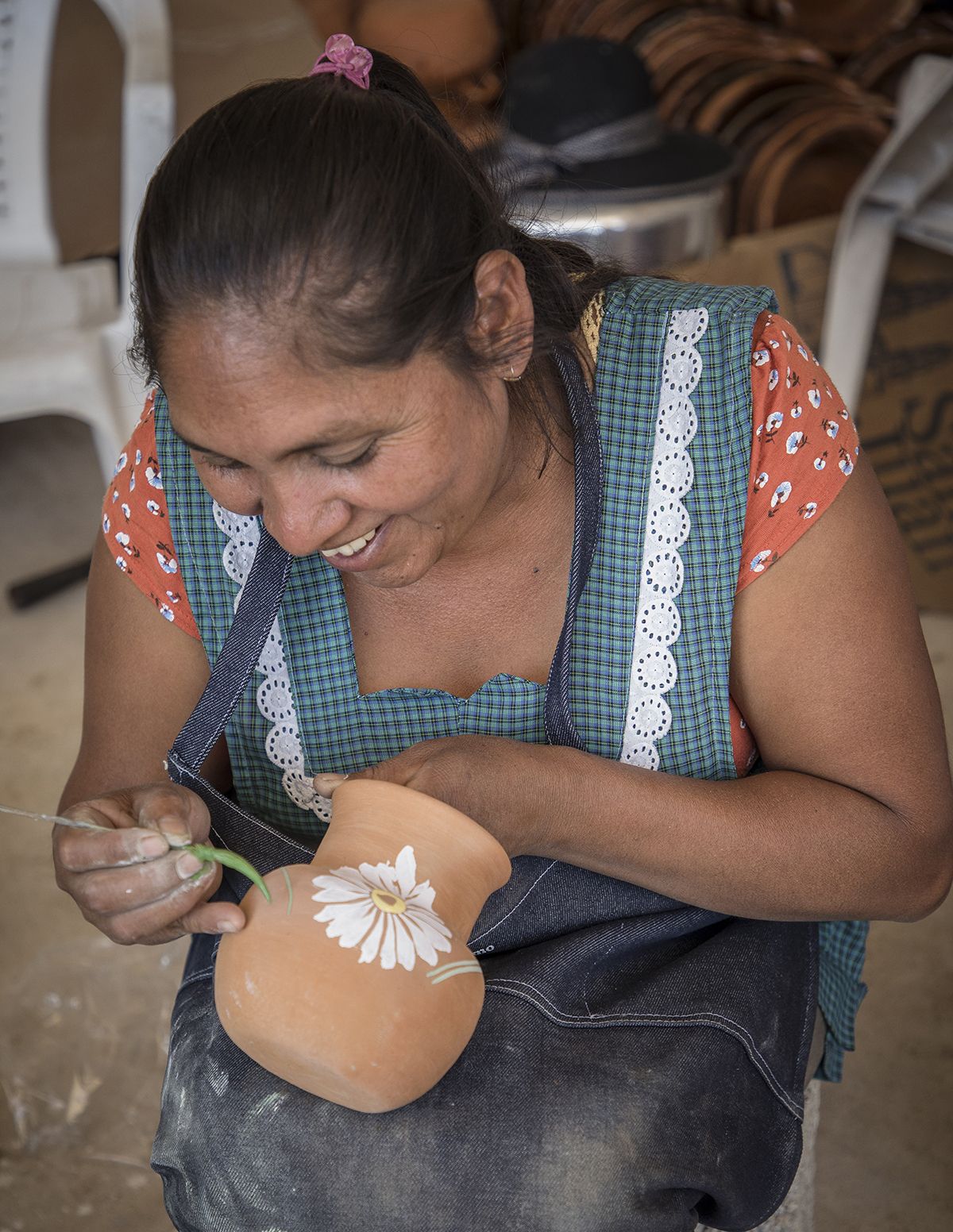Pollution causes more deaths than war, hunger or malaria, but often the most serious impacts are invisible and far away. In the UK and Europe, fairly strict regulations are in place, but that’s not the case in many low- to middle-income countries, where the people most affected by chemical pollution aren’t always aware of or able to avoid it.
In Mexico, ceramics are traditionally glazed with lead oxide, a heavy metal compound that is poisonous even at extremely low doses. Not only are thousands of artisan potters exposed to lead during the production process, but so too are the people using these pots in homes and restaurants across the country on a daily basis. If anything hot, or anything acidic such as orange juice, is cooked or served in these pots, lead leaches out into the food or drink.
The full scale of this lead poisoning only became apparent for the first time in 2019 when blood lead levels were included as part of the national survey of health and nutrition, a study that is conducted every six years by the National Institute of Public Health in Mexico. The report announced that lead-glazed pottery is the main source of lead poisoning exposure in Mexico and at least a million children between the ages of one and four have elevated blood lead levels as a result.
The international charity Pure Earth specialises in toxic chemical pollution clean-ups in low- to middle-income countries and works with communities to help eliminate the problems at source. The team has a strong focus on lead as the most serious, and most easily preventable, health concern. In Mexico, Daniel Estrada, who runs Pure Earth’s Barro Aprobado programme, works with local champions to highlight the importance of using lead-free glazes. Although this is also a problem in Peru, Bolivia, Ecuador and Brazil, the problem is markedly more widespread in Mexico. Estrada explained that 10,000 Mexican artisan potters use this toxic substance: “This has been happening since lead oxide glaze was first introduced following the arrival of Spaniards to Mexico in the 16th century, but despite regulations that ban the sale of lead oxide to potters, the practice continues because it’s so deeply embedded in Mexican culture and nobody wants to jeopardise the livelihoods of the artisans.”
So far, Pure Earth has a directory of 50 potters who have committed to switching to lead-free glaze. Estrada works with producers of lead-free glaze, and partners with restaurants and consumers to promote the production and use of lead-free cookware and serving dishes. He also visits traditional potters in their workshops, and many are shocked when they connect the glaze with their high blood lead levels. Yet even when potters start using lead-free glaze, they sometimes mix in lead oxide to get an authentic texture, so there’s still a long way to go to ensure the switch to non-toxic alternatives. “We need action,’’ Estrada demanded. “With more budget and support from the federal government, change can happen more quickly.”
Toxic chemicals pose different risks to people and the planet at the manufacturing stage, during use, and after disposal. Overconsumption in high-income countries can drive pollution problems elsewhere in the supply chain, yet people working in chemical manufacturing, mining or informal recycling might rely on these industries as their only source of income. Generally, smaller, lower-income countries are much worse off than high-income countries, and in places such as Chad, Central Africa, North Korea, Niger and Madagascar poor sanitation and contaminated indoor air contribute to the highest death rates attributed to chemical pollution, according to the Global Alliance on Health and Pollution.
In India, many people rely on unregulated or informal recycling of lead-acid car batteries as their primary source of income. Recycled batteries are cheaper than brand new ones and are used to power anything from solar energy storage to rickshaws, but the process of producing them is dangerous for the people involved and for the surrounding environment.
More than 80% of lead used today goes into lead-acid batteries. Most of those batteries are made and sold in low- and middle-income countries, according to the International Lead Association. Refined lead is used in recycled batteries as well as in paints, ammunition and cables. Beyond the realms of formal recycling operations, battery recycling is incredibly toxic and very hands-on. Lead-acid batteries are cut open with an axe, the electrolyte liquid that contains sulphuric acid and some lead is poured out onto the ground, and then the remaining lead is smelted in a large open fire and melted down into ingots. During this furnacing process, hot, toxic fumes escape. Lead-contaminated effluent ends up in the soil and crops and in water systems, and lead dust spreads in the air, often close to densely populated residential areas. Blood lead levels in the recyclers on the frontline are particularly high as a result. The negative effects end up all over the world in exported fruit, vegetables and spices grown on contaminated land. So we can’t ignore it. More responsible battery recycling would benefit everyone, everywhere.
“In the lead-pollution landscape, India looms large,” explained Karti Sandilya, senior adviser for Pure Earth, who’s on a mission to reduce lead poisoning at the source as well as remediate contaminated sites. “When it comes to scale and impact of pollution, nothing else comes close to lead – blood lead levels are off the charts in children here. If we can stop the lead-poisoning problem, we’ll get huge benefits.”
While remediation of lead contamination is a key step, a systems shift is under way, too. As things stand, informal recyclers in India don’t have to pay tax, so they can massively undercut formal recyclers when dead car batteries are put up for auction. Now Sandilya is working with the Indian government and the Material Recycling Association of India to exempt recyclable materials from this tax and create a more even playing field so that all batteries are sent to formal recycling operations, and lead poisoning can be stopped at source. Sandilya hopes that once the system has changed, informal recyclers will be more motivated to seek out safer options of making a living. Because the formal recycling operations would then increase in scale, income tax revenue would increase and the government wouldn’t lose out in the long run. It’s not a quick process, but Sandilya is optimistic: “If we can show success here, solutions could be replicated in other places around the world.”
Clean-ups only really happen when appropriate laws are enforced, but remediation alone is never the answer. As the climate crisis accelerates, and floods, hurricanes and wildfires become more frequent, there’s also an increasing risk that toxic chemicals could overflow from designated decontamination sites to surrounding inhabited communities. Pollution stops when we turn off the tap. Innovation is key to that. The phasing out of chemicals of concern is the way forward. Right now, it’s time to redress the balance, consider whether our use of certain products is essential, and reduce our chemical consumption accordingly, while looking at the pollution landscape through a global lens.
Join Anna Turns to discuss her book on 20 April at 7pm with the Resurgence book club. www.resurgenceevents.org/events








